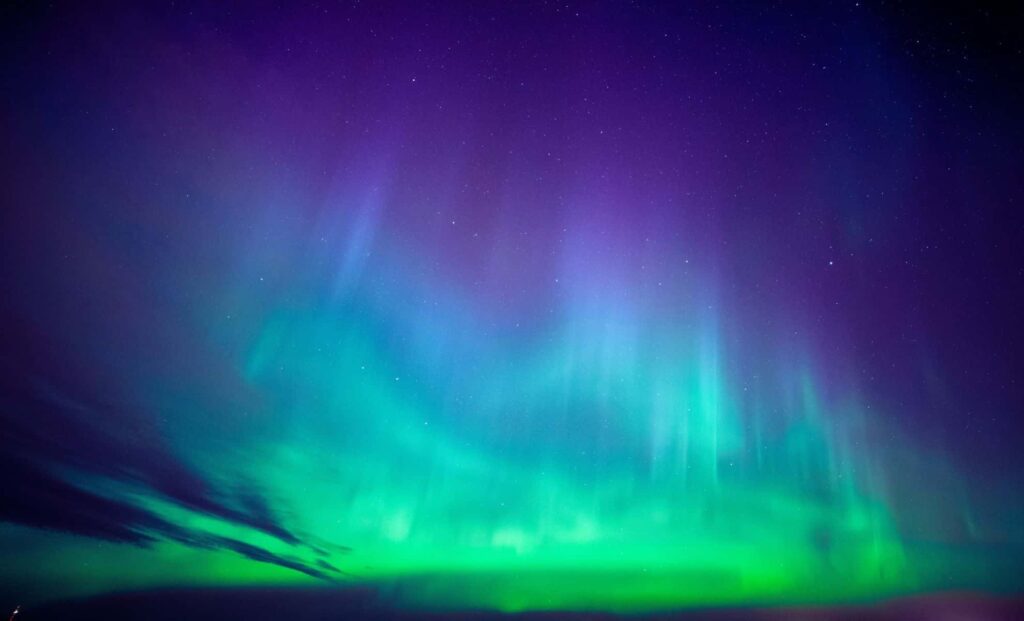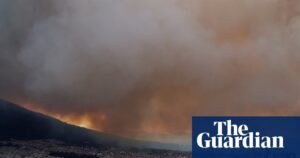
The upcoming geomagnetic storm is capturing widespread attention as it promises to bring the breathtaking northern lights, or aurora borealis, to 14 U.S. states. On June 24 and June 25, 2025, a minor geomagnetic storm, as forecasted by the National Oceanic and Atmospheric Administration (NOAA), is expected to offer a stunning display visible from more southerly latitudes. This spectacle coincides with a 23-year peak in solar activity, attributed to the ongoing solar maximum. For many, this presents a rare chance to witness the northern lights outside the usual high-latitude regions.
The announcement comes as the NOAA’s Space Weather Prediction Center (SWPC) provides real-time updates on such events, utilizing the aurora dashboard to deliver forecasts based on solar wind data. These predictions are crucial for enthusiasts hoping to catch the aurora before it fades into the night sky. The NOAA’s aurora dashboard offers essential data on solar wind intensity and other factors influencing aurora visibility.
Understanding the Northern Lights Phenomenon
The mesmerizing light displays known as the aurora borealis are the result of solar wind—streams of charged particles emitted by the sun. These particles interact with Earth’s magnetic field, colliding with atmospheric atoms, primarily oxygen and nitrogen. When these atoms are energized by these collisions, they release light, which we perceive as the aurora. The colors and patterns vary based on the type of gas involved and the altitude of the interactions.
The aurora’s visibility is closely linked to geomagnetic storms, which occur when solar activity intensifies. As the sun’s magnetic field becomes more active, it emits solar flares and coronal mass ejections (CMEs) that can trigger these storms on Earth. The solar maximum period, occurring roughly every 11 years, amplifies these storms, leading to more frequent aurora sightings even at lower latitudes.
Aurora Borealis to Grace 14 U.S. States
On June 24 and June 25, 2025, the minor geomagnetic storm will allow the aurora to be visible in up to 14 U.S. states. These states include Washington, Idaho, Montana, Wyoming, North Dakota, South Dakota, Minnesota, Wisconsin, Michigan, Iowa, New York, Vermont, New Hampshire, and Maine. While northern states near the U.S.-Canada border will have the best chance of catching a glimpse of the aurora, areas further south could still enjoy a decent view, especially if they are free from light pollution.
Experts recommend that those hoping to see the aurora move away from city lights and head to rural areas, where skies are darker and viewing conditions are optimal. The best times to witness the aurora are typically after sunset and before dawn, as this is when the aurora is most visible in the sky. However, due to the unpredictable nature of geomagnetic storms, there’s no guarantee of a clear view, so it’s wise to monitor forecasts closely.
Tracking the Aurora’s Movement
Predicting exactly when and where the northern lights will appear is not an exact science. While NOAA provides forecasts based on solar wind and geomagnetic conditions, real-time tracking is made possible by data from NASA’s DSCOVR and ACE satellites. These satellites orbit the sun, about a million miles from Earth, and offer roughly 30-minute warnings before aurora displays. The DSCOVR satellite provides crucial data that helps NOAA predict the aurora’s timing and intensity, allowing the public to stay updated on the latest forecasts.
For the most accurate and up-to-date information, it’s recommended to use tools like the Glendale App, which offers live alerts and forecasts for aurora sightings. Keeping an eye on the 30-minute forecast can help catch the aurora at its peak visibility.
Duration and Impact of the Geomagnetic Storm
The geomagnetic storm expected on June 24 and 25 is considered minor, rated at G2 on the G1 to G5 scale. This means that although the storm’s intensity is not extreme, it will still produce a visible aurora in regions where it is typically not seen. Geomagnetic storms of this scale are expected to occur more frequently as we approach the peak of the solar cycle, which is set to last until 2026. As a result, people in areas where auroras are not common could see more frequent light displays in the coming months.
While this storm is not expected to have significant effects on Earth’s infrastructure, such as satellite operations or communication systems, it’s an exciting event for aurora watchers. Geomagnetic storms of higher intensity, such as those rated G3 and above, could potentially cause disruptions to these systems, but they are much rarer.
As the solar maximum continues to unfold, the possibility of witnessing the northern lights in unexpected places adds a layer of excitement for both seasoned observers and newcomers alike. The coming months may offer more opportunities to experience this natural wonder, reminding us of the dynamic interplay between our planet and the sun.






